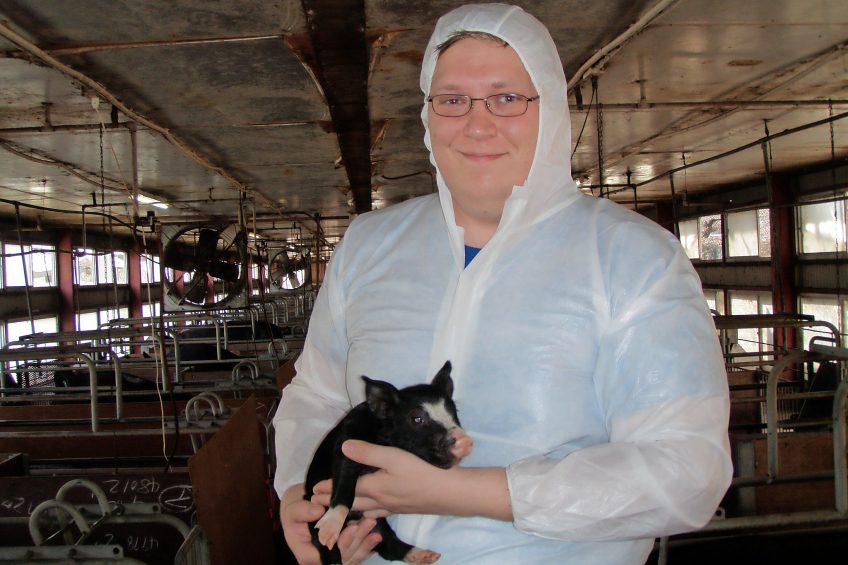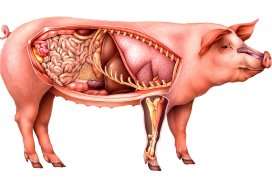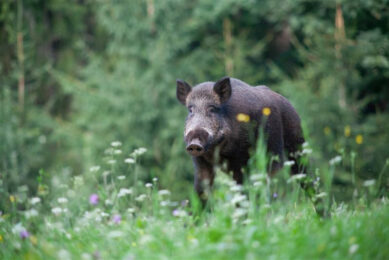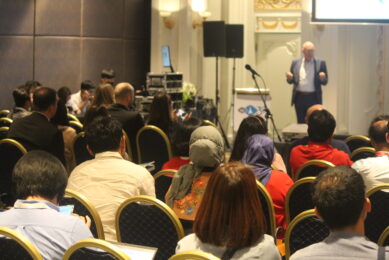A global pig veterinarian bringing experts together

As pig production expands worldwide and becomes increasingly professional, it is therefore essential that swine veterinarians network more to exchange their expertise – a need just as crucial in Europe as elsewhere. Bringing veterinarians together to help meet this requirement is one of the main aims of Dr Andreas Palzer.
Dr Andreas Palzer describes himself modestly as ‘a Bavarian vet who only works with pigs’. This statement can be challenged on a number of counts. First of all, he is much more than ‘just’ a Bavarian vet. He is very definitely a European one. In fact, ‘global’ might be the most appropriate adjective here. As president of the pig veterinary practitioners’ platform, the European Association of Porcine Health Management (EAPHM), he has attended world events in this field including the US-based American Association of Swine Veterinarians (AASV) annual meeting.

BIOGRAPHY
Dr Andreas Palzer is partner and director of the Scheidegg Veterinary Practice in Bavaria, Germany, within which ten veterinarians treat all animals. Dr Palzer specialises in pigs; his wife Dr Brenda Babel-Palzer is a leading vet in the small animals section. Dr Palzer also lectures as associate professor in the veterinary faculty of the Ludwig Maximillian University (LMU) in Munich. He is a member of the presidium of the Federal Association of Practicing Veterinarians (bpt) in Germany and president of the European Association of Porcine Health management (EAPHM). EAPHM is a community of specialist pig veterinarians in Europe with the aim of providing European practitioners with a platform for sharing information and works closely with the FVE (the Federation of Veterinarians in Europe) and Union of European Veterinary Practitioners (UEVP).
Slightly nearer to home, he is involved in organising the annual European Symposium of Porcine Health Management (ESPHM), an event to be staged this year in Prague, Czech Republic, during May. This event attracts experts from all over the world and in 2017 marks a milestone on the road towards one of Dr Palzer’s most cherished ambitions: a closer working together of all relevant European porcine health organisations.
“Our aim is a true network of experts in this field with its own open and freely-accessible journal (published together with the European College for Porcine Health Management – ECPHM) publicising the latest findings and developments in pig health and management. Globalisation means we have to stay far ahead of the game for optimal control and expertise in this field: a world-class symposium of experts each year gives professionals the platform they need in this field.”
Platform for swine practitioners
Also involved in presenting the Prague European Symposium of Porcine Health Management is the European College of Porcine Health Management – Dr Palzer is a diplomat for this college, which he says tends to represent more the academic and research aspects behind porcine health management as opposed to the EAPHM’s role as platform for the practitioners in this field.
The symposium was held last year in Dublin, Ireland. This was a special event including the congress of the International Pig Veterinary Society (IPVS). In Ireland, the national swine veterinary associations were involved in the organisation of the symposium. Dr Palzer sees this aspect as an important part of the growing involvement of each country in the European movement.
This year, for instance, the local supporting organisation for the symposium is the Czech Pig Veterinary Association (CPVS). This trend is to continue in the coming years. In Barcelona, next year, for example, and probably in the Netherlands for 2019.
Target of internationalism for porcine health experts
“Towards the target of internationalism and inherent usefulness as a platform for all porcine health experts, the Dublin event proved excellent with around 3,400 delegates attending,” he explains. “The Prague event is shaping up to be just as successful in its own way. In February this year we had over 400 abstracts submitted for poster presentations and discussions. Impressive is also the line-up of keynote addresses.”
Keynote subject matter will, as always at the annual symposium, cover the major challenges of the day facing pig production and health. “Once again, one of the really important subjects will cover all aspects of antimicrobial resistance and strategies to combat the problem,” says Dr Palzer, adding: “Intestinal health and nutrition of pigs is another very important subject that will definitely be prominent at the symposium. And welfare in pig breeding and feeding will be a theme too.”
Antibiotic resistances
In everyday practice, how does this veterinarian view the way in which antibiotic resistances are being tackled throughout Europe?
Dr Palzer is a practitioner who is already on record as a proponent of monitoring not simply antibiotic use on livestock farms, but also of recording and analysing the cases of resistance occurring. “First of all, we are monitoring antibiotic use on farms increasingly efficiently thanks to computerisation and better technologies for data collection and analysis,” he emphasises. “It is, therefore, easier for us to identify the herds that use antibiotics most.”
But, Dr Palzer argues that the incidences of resistance should get much more attention and can be central to devising ways of dealing with this global problem. After all, he continues, micro-organisms resistant to antibiotics do not develop entirely through over-use in livestock farming. Resistant bacteria also arrive in respective countries through international traffic and the passengers involved.

Find out all there is to know about pig health using Pig Progress’ unique Pig Health Tool
Pig production in southern Germany
Animal health and welfare has been an abiding interest with Dr Palzer: starting during his childhood on the family farm in western Germany. He studied veterinary medicine at the University of Munich and then worked in research and teaching at the LMU Clinic for Swine before joining the management of the Scheidegg Veterinary practice.
Getting back to day-to-day veterinary work, Dr Palzer touches on the pig production situation nowadays in his part of the country. “First of all, Bavaria has retained, to a large extent, its infrastructure of smaller family-run farms when compared with northern and eastern Germany and indeed the rest of Europe.” In 2013, the average breeding sow herd in Bavaria had 70 sows and in Lower Saxony, this was 200 sows.
Dr Palzer continues: “Having said that, pig enterprises are growing here too, however, nothing like the scale been seen elsewhere.”
Are comparatively smaller units easier for a vet to deal with compared with the mega breeding and feeding farms, we read about elsewhere?
“In terms of visits per day, small units naturally represent more work and more time for the vet. Nevertheless, I would hesitate to say that they present any more animal health and hygiene challenges than larger units. The great advantage of family units, I think, is that you are almost always speaking directly with the boss. These people know their business inside out, and every aspect of production. This makes a vet’s job much easier.”
Farming professionalism
Dr Palzer goes on to explain that this farming professionalism, in-line with improved education opportunities for younger generations, means the nature of veterinary work has changed too. “It means our work nowadays is more to do with preventative measures. In the past, there was much more curative input. Very high standards of hygiene with well-understood and established safety routines are in-place mostly everywhere. Sure, we still discuss disease and its prevention all the time with our clients. However, nowadays we find ourselves discussing nutrition too. And welfare for the animals is also part of the whole picture and therefore a part of the modern veterinarian’s work.”
Outside of his busy veterinary practice, Dr Palzer wants to encourage the networking of the animal health sector throughout Europe and even further afield. This is a movement already established through the important annual platform provided by the ESPHM. Moreover, Dr Palzer aims to keep the ball rolling in this respect through more integration with other organisations such as the AASV and the Asian Pig Veterinary Society (APVS) for increasingly efficient pig health management the world over.











